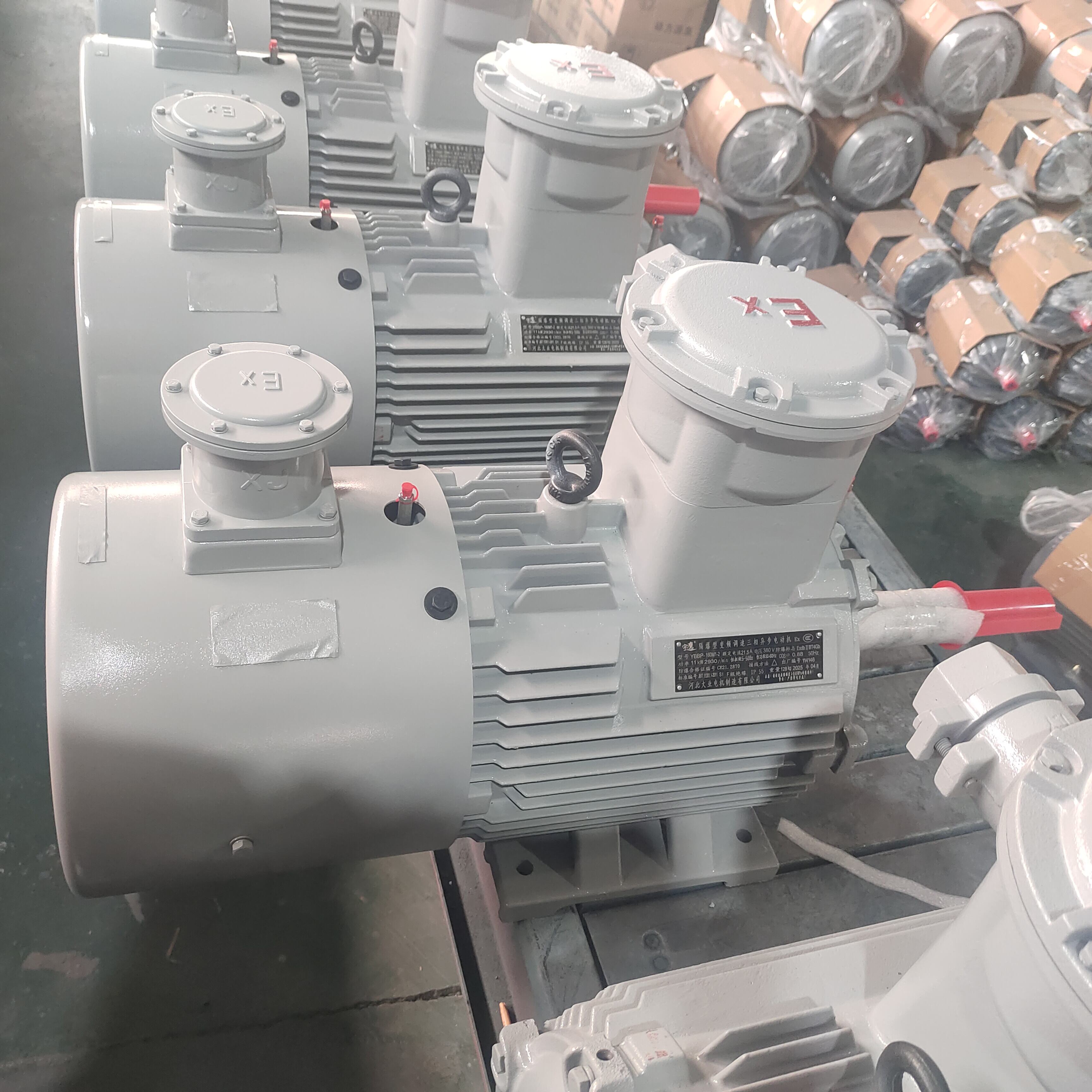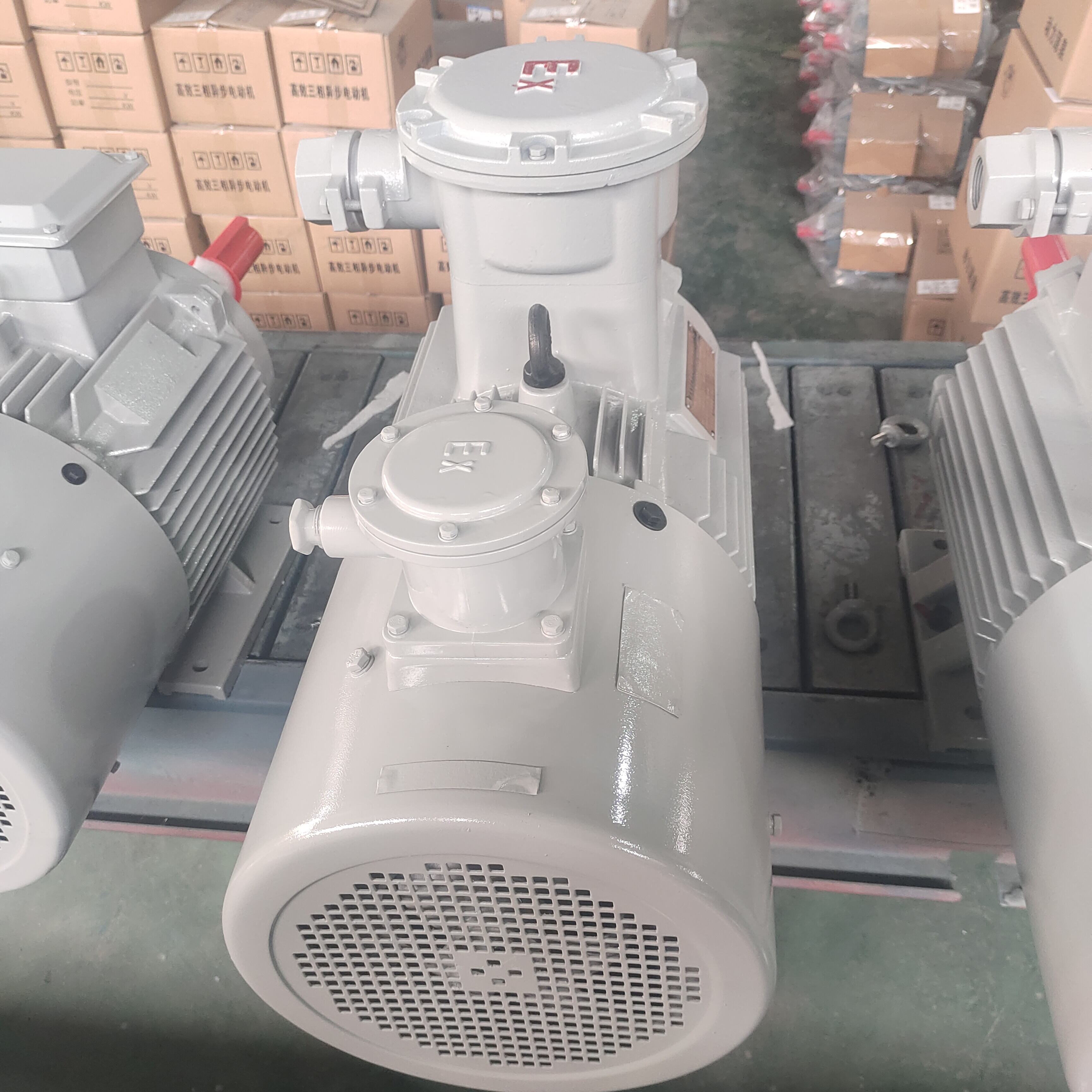Variable Frequency Motors: Enhancing Speed Control in Industrial Processes
Introduction to Variable Frequency Motors
In the modern industrial landscape, efficiency and adaptability are more important than ever. Machines that once relied on fixed-speed motors are increasingly being replaced or upgraded with solutions that allow for greater flexibility and improved energy efficiency. Among these solutions, the Variable Frequency Motor has emerged as a key innovation. By enabling precise speed and torque control, it provides industries with the ability to optimize processes, conserve energy, and reduce equipment wear. These motors are not just technical upgrades but fundamental components of smarter, more efficient, and more sustainable industrial operations.
Principles of Operation
Role of Frequency in Motor Speed
The speed of an electric motor is directly tied to the frequency of the alternating current that powers it. A fixed-speed motor runs at a constant speed determined by the grid frequency, typically 50 Hz or 60 Hz, regardless of load demand. A Variable Frequency Motor, however, is paired with a variable frequency drive (VFD) that adjusts the input frequency and voltage. By altering these parameters, the motor can operate at virtually any speed within its design range, providing unparalleled flexibility for industrial applications.
Torque and Efficiency Management
Alongside speed control, a Variable Frequency Motor can manage torque delivery. This ensures that machines do not draw excessive power under low-load conditions, preventing wasted energy. By balancing voltage and frequency, the system ensures efficient operation at both low and high speeds, optimizing energy use and minimizing wear on mechanical components.
Enhancing Speed Control in Industrial Processes
Precision Control for Improved Quality
Many industrial processes require precise control of machine speed. In textile production, for instance, varying thread tension can affect fabric quality. A Variable Frequency Motor provides consistent and adjustable speed, ensuring uniform output and high product quality. Similar precision is essential in food packaging, printing, and CNC machining, where small deviations can result in significant waste.
Smooth Acceleration and Deceleration
Traditional motors often create mechanical stress due to abrupt starts and stops, which can shorten the lifespan of machinery. Variable Frequency Motors allow gradual acceleration and deceleration, reducing strain on components and enabling smoother transitions. This not only improves machine performance but also enhances operator safety.

Flexibility for Different Load Conditions
Industrial processes often involve fluctuating loads. For example, conveyors may carry varying weights depending on production volume. A Variable Frequency Motor can adapt instantly, adjusting speed to maintain stable performance while minimizing energy use. This adaptability ensures processes remain efficient and reliable even under unpredictable conditions.
Synchronization of Multiple Motors
In complex systems, multiple motors may need to work in synchronization, such as in assembly lines or paper mills. Variable Frequency Motors allow precise coordination by adjusting speed and torque dynamically, ensuring smooth workflow without bottlenecks or mismatches.
Industry Applications
Manufacturing and Assembly
Manufacturing relies heavily on accurate speed control to maintain consistent production quality. Variable Frequency Motors are used in conveyor belts, machine tools, and robotic arms, where precision, adaptability, and energy efficiency are critical. By controlling motor speed to match production needs, manufacturers minimize waste and increase throughput.
HVAC Systems
In heating, ventilation, and air conditioning, Variable Frequency Motors enhance energy efficiency by adjusting fan and pump speeds to match demand. Instead of running continuously at full power, motors adapt to environmental conditions, maintaining comfort while reducing energy costs.
Water and Wastewater Treatment
Pumps in water and wastewater facilities must handle changing flow rates. A Variable Frequency Motor allows operators to fine-tune pumping speed to match demand, improving efficiency while reducing wear. This leads to lower maintenance requirements and consistent water quality.
Oil and Gas
In the oil and gas industry, Variable Frequency Motors are used in drilling rigs, compressors, and pumps. The ability to control speed precisely allows equipment to operate safely under high stress while maximizing efficiency in energy-intensive processes.
Mining and Heavy Industry
Variable Frequency Motors support heavy-duty machinery such as crushers, conveyors, and hoists. By adapting to fluctuating loads, they enhance safety and reliability while extending the life of equipment operating under extreme conditions.
Agriculture
Agricultural operations benefit from the speed control capabilities of Variable Frequency Motors in irrigation systems, feeding equipment, and crop processing machines. Adjusting motor speed based on demand ensures efficient use of energy and resources.
Technical Advantages of Variable Frequency Motors
Energy Efficiency
The relationship between motor speed and energy consumption is exponential in variable torque applications such as fans and pumps. Even a small reduction in speed can lead to significant energy savings. By ensuring motors run only as fast as necessary, Variable Frequency Motors cut electricity consumption dramatically.
Reduced Mechanical Stress
Smooth acceleration and deceleration prevent sudden mechanical shocks, reducing strain on gears, bearings, and belts. This lowers repair costs and extends the overall lifespan of machinery.
Regenerative Braking
Some Variable Frequency Motors incorporate regenerative braking, allowing energy generated during deceleration to be fed back into the power supply. This recovered energy improves system efficiency and reduces operational costs.
Programmable Operation
Variable Frequency Motors can be programmed for specific speed ranges, safety limits, and acceleration profiles. This programmability allows operators to tailor motor performance precisely to the demands of the application, enhancing process efficiency and safety.
Improved Power Factor
Variable Frequency Motors with advanced drive designs improve the power factor of electrical systems. This reduces losses in power distribution, optimizing the overall efficiency of industrial facilities.
Challenges in Implementation
Higher Initial Costs
One of the primary challenges in adopting Variable Frequency Motors is the higher upfront investment compared to fixed-speed motors. However, the long-term savings in energy and maintenance often offset these costs.
Harmonics and Power Quality
VFDs can introduce harmonic distortion into power systems, which may interfere with sensitive equipment. Solutions such as harmonic filters or active front-end drives are often required to mitigate these issues.
Cooling Requirements
At low speeds, self-cooling capacity of motors may decrease, requiring additional cooling systems to prevent overheating. Proper installation and monitoring are essential to ensure long-term reliability.
The Future of Variable Frequency Motors
Variable Frequency Motors are becoming increasingly intelligent through integration with digital technologies. With IoT connectivity, operators can monitor motor performance in real time, implement predictive maintenance, and optimize processes remotely. Advances in semiconductor design are making drives more compact and efficient, further lowering costs and expanding applications. In sustainable energy systems, Variable Frequency Motors are essential for balancing variable power inputs from wind and solar energy with the demands of industrial processes.
Conclusion
The Variable Frequency Motor represents a major advancement in industrial motor technology, offering precise speed control, adaptability to fluctuating loads, and significant energy savings. By enhancing process efficiency, improving product quality, and reducing mechanical stress, these motors have become essential in industries ranging from manufacturing to mining and HVAC to agriculture. While challenges such as higher initial costs and power quality issues exist, the long-term benefits in efficiency, reliability, and flexibility make Variable Frequency Motors indispensable in modern industrial processes. Their future integration with smart technologies and renewable energy systems ensures they will remain a cornerstone of industrial innovation.
FAQ
How does a Variable Frequency Motor improve speed control?
It regulates motor speed by adjusting the frequency and voltage of the electrical supply, allowing precise control over rotation speed.
Why are Variable Frequency Motors more efficient than fixed-speed motors?
They match motor output to load requirements, reducing energy waste and improving overall system performance.
What industries benefit most from Variable Frequency Motors?
Industries such as manufacturing, HVAC, water treatment, oil and gas, mining, and agriculture benefit from their adaptability and efficiency.
Do Variable Frequency Motors reduce mechanical wear?
Yes, smooth starting and stopping minimize mechanical stress on components, extending equipment life.
Can Variable Frequency Motors provide energy savings?
Yes, particularly in variable torque applications like fans and pumps, where small reductions in speed lead to large energy savings.
Are there challenges with Variable Frequency Motors?
Challenges include higher initial costs, harmonic distortion, and cooling requirements at low speeds, but these can be managed with proper design.
Do Variable Frequency Motors support regenerative braking?
Some models include regenerative braking, which recovers energy during deceleration and feeds it back into the system.
How do Variable Frequency Motors affect process quality?
By providing precise speed and torque control, they ensure consistency and accuracy in industrial processes, improving product quality.
Can Variable Frequency Motors integrate with IoT systems?
Yes, modern motors and drives can connect with IoT platforms for real-time monitoring, predictive maintenance, and optimization.
What is the future of Variable Frequency Motors?
Future developments include smarter drives with AI, better energy efficiency, and expanded use in renewable energy and automated systems.
Table of Contents
- Variable Frequency Motors: Enhancing Speed Control in Industrial Processes
- Introduction to Variable Frequency Motors
- Principles of Operation
- Enhancing Speed Control in Industrial Processes
- Industry Applications
- Technical Advantages of Variable Frequency Motors
- Challenges in Implementation
- The Future of Variable Frequency Motors
- Conclusion
-
FAQ
- How does a Variable Frequency Motor improve speed control?
- Why are Variable Frequency Motors more efficient than fixed-speed motors?
- What industries benefit most from Variable Frequency Motors?
- Do Variable Frequency Motors reduce mechanical wear?
- Can Variable Frequency Motors provide energy savings?
- Are there challenges with Variable Frequency Motors?
- Do Variable Frequency Motors support regenerative braking?
- How do Variable Frequency Motors affect process quality?
- Can Variable Frequency Motors integrate with IoT systems?
- What is the future of Variable Frequency Motors?


